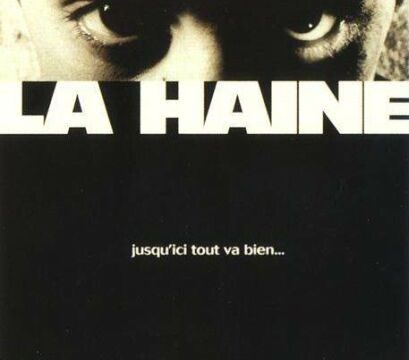Doug’s Cinematic Firsties is a recurring series wherein Douglas Laman (A.K.A. NerdInTheBasement) will review a well-known classic motion picture that he’s never seen before.
The philosophy of Chekov’s Gun refers to the idea that if you set something up early on in a piece of art, you have to pay it off. The title of this device references the idea that, if you show a gun in a movie, you have to eventually depict the characters using it. Properly using this narrative device allows for a sense of connective tissue throughout the story, a throwaway object from early on can become crucial from the end. In the case of the 1995 French drama La Haine, the interior personalities of the three central and endlessly angry character Vinz (Vincent Cassel) is like the movies own Chekov’s Gun. It’s something established clearly early on and from there you know it will, sometime down the road, go off. It’s a ticking time bomb that should deliver the sort of pay-off that defines Chekov’s Gun.
La Haine isn’t just about the anger of Vinz, oh no. This film, written and directed by Mathieu Kassovitz, follows a day in the life of three French youths, Vinz, Hubert (Hubert Kounde) and Said (Said Taghmaoui) who are exceedingly anti-establishment. French society inherently sees them as lesser-than because of their class status as well as, in the case of Hubert and Said, the color of their skin. How can they not be rebelling against the larger society they inhabit? Over the course of La Haine, each of the three lead characters get their individual worldviews fleshed out and we get a detailed portrait of the struggles of people French society looks at just care-free rabble-rousers.
La Haine has many brilliant ways of digging deeper into the lives of its central protagonists. Perhaps the most distinctive of these methods is propulsive camerawork that swings the viewer around and places them directly into the go-go-go mindset of Vinz, Hubert and Said. When they’re being chased by cops, Kassovitz’ ensures that the movement & placement of the camera reflect the high-energy nature of the sequence. This is accomplished without resorting to the sort of visual incoherence that plagues shaky-cam attempts at reflecting on-screen chaos. La Haine’s camera is frequently on the move but there’s always clarity and purpose to its movements.
There’s similarly a level of thought into scenes where the camera is kept stagnant. This is most discernible in a scene where Huber and Said are violently interrogated at a police station. In previous scenes, like the aforementioned cop chase sequence, the camera was used to reflect how these teens and their friends were always on the move. They could sneak through alleys, squirm their way through the tiniest cracks in the wall and run like there was no tomorrow. In these scenes, the camera was used to reflect the characters’ level of physical freedom. Now that Hubert and Said are strapped to chairs and tormented by the police, the camera once again visually reflects their circumstances.
Now Kassovitz keeps the camera just as firmly placed in one location as Hubert and Said. The anguish of these teens is captured in a wider shot that never exhibits any kind of movement. The exhilaration of freedom has been replaced with the torment of the horrors of confinement. Those sharply contrasting moods are vividly reflected in La Haine’s camerawork. The camerawork isn’t the only visual attribute of La Haine that stands out as impressively realizing the interior feelings of the characters. For example, cinematographer Pierre Aim beautifully frames Hubert pounding away at a punching bag against a backdrop of shadows in this characters introductory shot. Just through this image, one immediately understands Hubert’s circumstance. Every day, he’s fighting away against an overwhelming amount of societally-ingrained forces looking to drag him down solely based on the color of his skin.
Such daunting obstacles aren’t always active but they’re always lurking and waiting in the background much like the shadows that surround him in this shot. Unforgettable imagery deeply rooted in three-dimensional characters are a cornerstone of La Haine. Just as vividly-realized as the visuals in La Haine is its lead characters. Though they all share distrust for authority, the central protagonists of La Haine each of them have a distinct personality & perspective. Watching those unique dispositions clash up against one another throughout La Haine’s runtime helps to make an already visually engrossing production all the more captivating.

